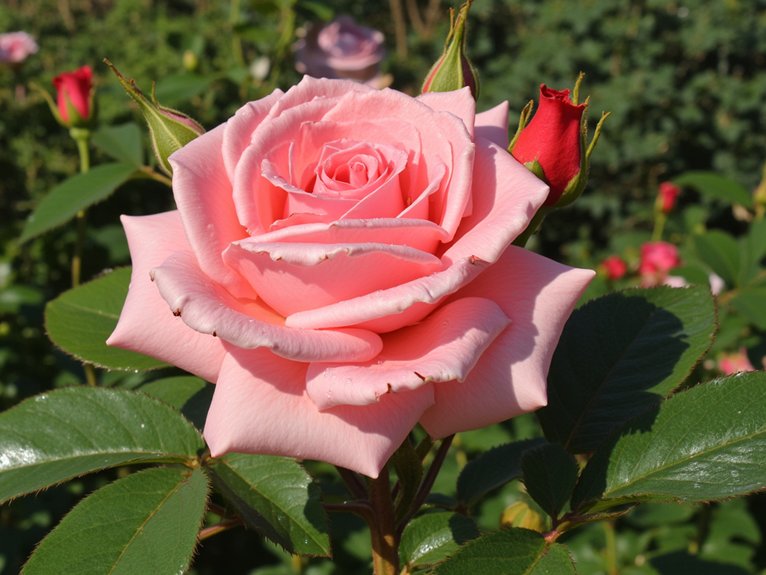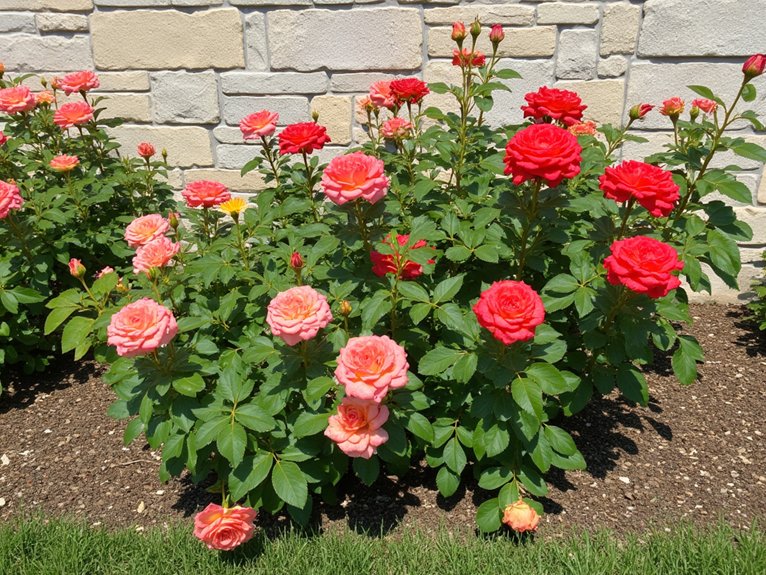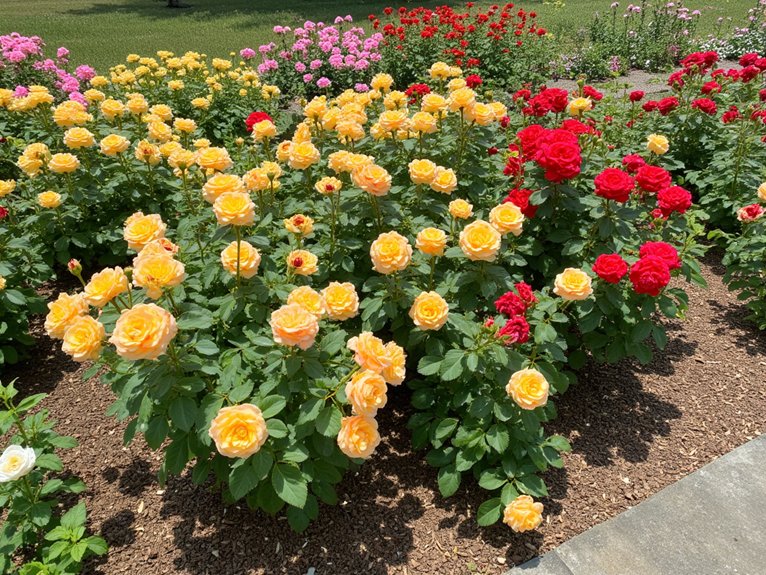Disease-resistant roses have revolutionized modern gardening by eliminating the constant battle against common plant diseases. Dr. Sarah Chen, leading horticulturist at Cornell University, notes that “these resilient varieties can reduce maintenance time by up to 70% while delivering spectacular blooms.” From the butter-yellow ‘Julia Child’ to the blush-pink ‘Earth Angel’, these hardy cultivars offer both beauty and practical benefits. The key to transforming any garden lies in selecting the right disease-resistant varieties.
Contents
Why Disease-Resistant Roses Are Game-Changers

Disease-resistant roses have revolutionized gardening by eliminating many of the frustrating challenges that traditionally plagued rose enthusiasts. These innovative varieties offer remarkable disease resistance benefits, particularly against common issues like black spot and powdery mildew, which often discourage gardeners from growing roses.
The focus on low maintenance gardening has made these roses particularly valuable for busy homeowners and novice gardeners. With minimal intervention required, these varieties thrive in various climates and continue blooming throughout the season. Their resilience allows gardeners to spend less time treating plant diseases and more time enjoying their garden’s beauty.
Top Varieties for Your Garden’s Health and Beauty
Several outstanding rose varieties have earned recognition for their exceptional resilience and stunning beauty in modern gardens. The ‘Julia Child’ rose combines disease resistance advantages with buttery yellow blooms, while ‘At Last’ offers coral-sunset petals and impressive durability. ‘Caldwell Pink’ thrives in both sun and partial shade, reaching heights of 4-5 feet.
For those seeking diverse bloom color options, ‘Earth Angel’ produces vintage-style pink blossoms, and ‘Bolero’ displays pristine white flowers. These selections demonstrate how modern breeding has successfully merged disease resistance with the classic beauty gardeners desire in their landscape.
Essential Growing Tips for Maximum Success

Growing robust disease-resistant roses starts with proper site selection and soil preparation. Choose a location with 6-8 hours of daily sunlight and well-draining soil enriched with organic matter.
Effective pruning techniques maintain plant health and encourage abundant blooms. Remove dead or crossing branches in early spring, cutting at 45-degree angles just above outward-facing buds. For established plants, reduce height by one-third annually.
Master Gardener Lisa Chen recommends, “Focus on soil preparation by incorporating 2-3 inches of compost before planting. This foundation, combined with proper spacing for airflow, dramatically reduces disease pressure and promotes vigorous growth.”
Creating Stunning Rose Gardens With Smart Planning
When designing a spectacular rose garden, careful planning and thoughtful layout choices create the foundation for success. Strategic placement of rose color combinations enhances visual impact, while companion planting with complementary flowers adds depth and interest.
Group roses of similar heights together, placing taller varieties like Westerland (6-12 feet) in the background and shorter options like White Drift (1-2 feet) in the foreground. Consider spreading varieties that create natural groundcover between focal points. For maximum visual appeal, plant roses in odd-numbered clusters of three or five, allowing adequate spacing for proper air circulation and growth.
Year-Round Care for Resilient Rose Displays

Although disease-resistant roses require less maintenance than traditional varieties, proper year-round care remains essential for ideal health and abundant blooms. Seasonal maintenance includes spring pruning to remove dead growth, summer deadheading to encourage continual flowering, and fall cleanup to prevent disease spread.
Effective pest management focuses on prevention rather than treatment. “Regular inspection and early intervention are key to maintaining healthy roses,” notes rosarian Jane Smith. Basic practices include monitoring for aphids, maintaining good air circulation between plants, and applying organic mulch to suppress weeds and retain moisture.
Heritage and Modern Roses: Best of Both Worlds
Heritage roses bring timeless beauty and historical significance to gardens, while modern disease-resistant varieties offer improved performance and easier maintenance. The classic Rosa Mundi, dating back centuries, perfectly complements newer cultivars like ‘At Last’ and ‘Julia Child’ in mixed borders.
Modern hybrids such as Bliss Parfuma and Earth Angel maintain the cherished qualities of heritage roses – including rich fragrances and full blooms – while incorporating enhanced disease resistance. Gardeners can create stunning displays by combining old-world charm with contemporary resilience, resulting in gardens that honor rose cultivation’s history while embracing modern advancements in plant breeding.
